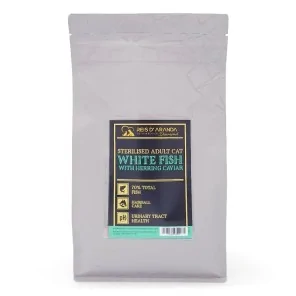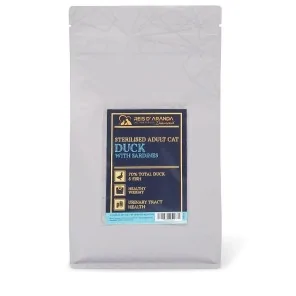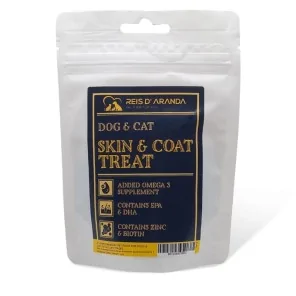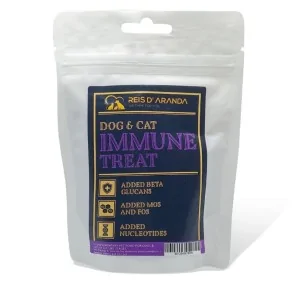Its name says it all: the Vienna blue rabbit comes from Austria. Not only is it beautiful with its shiny blue-grey...
CARE OF THE ELDERLY CAT
INTRODUCTION
Cats are considered "old" from the age of 10-12 years (between the age of 8 years and this age they are considered "mature" or "senior"). Many cats reach this age but not all reach this age with a good quality of life. Whether your cat remains healthy when it reaches old age depends not only on its genetic condition, but also on the care it has received during its lifetime.
WHAT ARE THE EFFECTS OF AGEING ON CATS?
Compared to young cats, elderly cats are more noticeable because of certain signs of senility. These signs begin to be observed from the age of seven years and are divided into external signs and behavioural changes:
PHYSICAL CHANGES.
A typical sign of senility in cats is a grey-white colouring of the coat (grey hair), especially on the head.
Over the years, the feline coat becomes matted more often because older cats can no longer groom themselves as well, and it usually becomes thinner and dries out more easily, so it is important to brush more regularly and apply moisturising dry sprays to prevent problems caused by excessive moulting or matting, such as intestinal stoppages, dermatitis and "heat patches" (localised moist dermatitis in a round shape).
A loss of muscle and postural instability may also be observed, and our cat may be more clumsy when walking or jumping. It is important to see a vet to rule out pain and bone or neurological diseases. Obesity is very common in neutered cats (less so in males).
Visual problems such as cataracts and retinal sclerosis (similar but different) are also common in older cats, as well as dental problems or excessive nail growth.
BEHAVIOURAL CHANGES.
It is normal for older cats to show changes in behaviour, these changes can be more or less noticeable and some of them are linked to physical or pathological problems such as osteoarthritis or Alzheimer's disease:
- Confused wandering due to visual and hearing loss.
- Sudden urination and defecation in the house (out of the tray)
- Increased physical fatigue
- Loss of memory (the cat gets lost in the house or does not recognise people or animals it has lived with throughout its life).
- decreased food and water intake
- occasional aggression to touch (due to bone problems, in response to pain)
- Frequent, plaintive meowing (a sign of dementia).
- Prefers to be alone rather than in company.
GERIATRIC VETERINARY CHECK-UPS
Many elderly cats suffer from systemic diseases, such as diabetes or kidney problems, they are also prone to joint diseases, such as osteoarthritis or osteoporosis (especially neutered females), hearing diseases (deafness or otitis) and visual diseases (cataracts, retinal detachment, retinal sclerosis...) or tumours in the case of unneutered animals. In order to detect and treat these diseases as early as possible, it is advisable to visit the vet regularly and to know how to detect any strange symptoms in our cat: foggy pupils, restricted movements, lack of appetite or strange lumps.
FEEDING THE ELDERLY CAT
Good quality food is essential for our cat to be in good health throughout its life, but it is during the periods of growth (puppy) and senescence (elderly) when they should be more careful in this respect, because their immune system is much more delicate.
We should opt for good quality feed high in protein as digestible as possible, such as white fish or duck, which are gentler for the digestive system and their high palatability will delight our elderly cat. On the other hand, we should offer them larger quantities of wet food and make sure they drink plenty of water (without exaggerating, as drinking a lot and urinating in the same way can be a symptom of diabetes), so that our elderly cat will be less likely to suffer from kidney problems and dehydration.
As treats, we can offer them the so-called "functional" ones, whose composition helps certain aspects of their health, such as the inume-dental snacks (to look after their immune system and teeth) and the "skin and coat" ones, which will help them to look healthy and shiny. Reis d'Aranda has functional snacks of these two varieties.
HOW CAN I MAKE YOUR CAT'S LIFE MORE COMFORTABLE?
As our cat gets older and older, we will have to adapt and make our home more comfortable, for example by offering more places to hide, soft beds or toys that are pleasant for them, such as catnip stuffed toys.
There are cats that, despite their age, show much less signs of aging; cats are not dumb animals so they will not do anything that can cause them physical pain, if you see that your cat wants to jump let him do it (always safely), except for those cases in which his movements must be restricted due to health issues (injuries, operations...).
Unlike adult cats, older cats have a weakened immune system (as mentioned above), so if they become stressed they are more susceptible to infections and other illnesses. A good option is to use pheromone-based products, these are very popular with cat owners and often have great results.
CONCLUSION
Cats are spectacular creatures who, no matter how many years go by, seem to have drunk from the fountain of eternal youth. But, although they always look young and shiny, like all creatures of the world, they also age.
As human companions to our pets, it is important to know when this phase begins in order to take the appropriate measures and provide them with the most suitable lifestyle.
Leave a comment
Log in to post comments
















